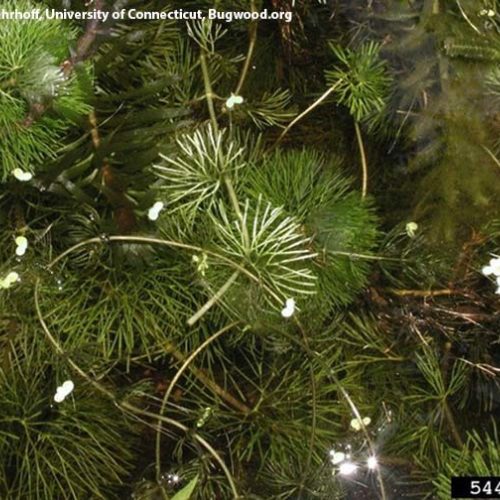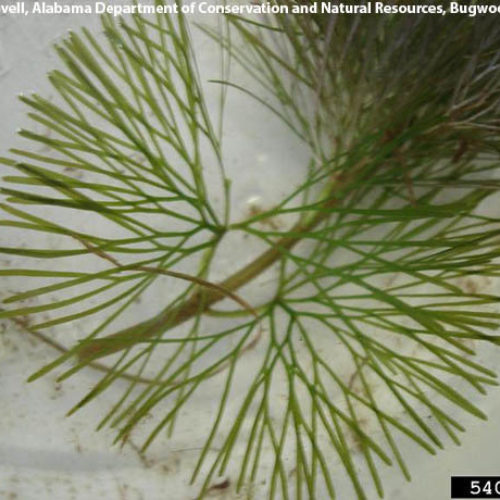Fanwort
Cabomba caroliniana

Family: Cabombaceae
Other Common Names: Carolina fanwort, Carolina water-shield, fish-grass
Weed class: B
Year Listed: 1996
Native to: The subtropic-temperate regions of eastern North and South America.
Is this Weed Toxic?:
not known to be
Legal listings:
This plant is also on the Washington State quarantine list. It is prohibited to transport, buy, sell, offer for sale, or distribute plants or plant parts of quarantined species into or within the state of Washington or to sell, offer for sale, or distribute seed packets of seed, flower seed blends, or wildflower mixes of quarantined species into or within the state of Washington. Please see WAC 16-752 for more information on the quarantine list. For questions about the quarantine list, contact the Washington State Department of Agriculture's Plant Services Program at (360) 902-1874 or email PlantServices@agr.wa.gov.
Why Is It a Noxious Weed?
It is an extremely persistent and competitive plant that grows densely and crowds out native species. It can clog drainage canals and freshwater streams. It can also prevent recreational activities and normal water flow requiring costly control measures.
How would I identify it?
General Description
Fanwort is a submersed, floating (often rooted) perennial, with short, fragile rhizomes. Erect shoots are upturned extensions of horizontal rhizomes.
Flower Description
Flowers are small, less than 1/2 inch in diameter and float on the water. Flowers have 3 petals and 3 sepals. White petals have yellow coloring at the base.
Leaf description
They are light to olive green and sometimes reddish brown. Two leaf types present—submersed and floating. Submersed leaves are oppositely arranged, fan-shaped and finely divided. Floating leaves are alternately arranged, narrow and appear near stem tips.
Stem description
Stems are long and branched, sometimes having a gelatinous coating.
Fruit Seed Description
Flowers form 2 to 4 leathery pods with each having 1 to 3 seeds.
Where does it grow?
The species grows rooted in the mud of stagnant or slow flowing water including streams, smaller rivers, lakes, ponds, sloughs, and ditches. Please click here to see a county level distribution map of fanwort in Washington.
How Does it Reproduce?
Fanwort reproduces by seed, rhizomes and stem fragments.
How Do I Control It?
Cultural Control
Drawdowns of water have been used in southern regions to control fanwort.
Biological Control
Grass carp will eat fanwort, but it is not a preferred food.
Herbicide Control
Because herbicide availability and regulation differ between states, we recommend the Washington Department of Ecology website for information on aquatic weed management and herbicides, or contact your county noxious weed coordinator.
For More Information
See our Written Findings for more information about fanwort (Cabomba caroliniana).
Cabomba caroliniana (Carolina fanwort) datasheet from CABI










